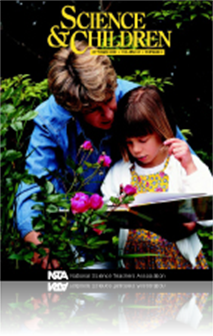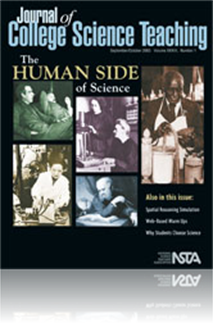All Resources
Journal Article
Beyond Paper and Pencil Assessments
Most paper-and-pencil assessments provide adequate insight into students’ ability and can help effectively guide instruction. A well-designed performance-based assessment propels a science program beyond this level of adequacy and guarantees that t...
Journal Article
This interdisciplinary unit weaves art and science together to help students appreciate the importance of recycling. In this engaging activity, students collected items worthy of recycling from home, and with the help of the art teacher, used a loom ...
Journal Article
More Space Shuttle Experiments Take Flight
In the November/December 1997 issue of Science and Children, the article “Space Shuttle Experiments Take Flight” described a unique industry mentorship program that enabled elementary students and their teachers to contribute to research involvin...
Journal Article
Solving Solutions: Exploring unknowns through chemistry
Developing middle school students’ problem-solving skills is a common goal of the National Science Education Standards and the Principles and Standards for School Mathematics. The following chemistry activities support the spirit and content of bot...
Journal Article
Beginning high school students may not have a firm foundation in the prerequisite skills to succeed in a laboratory-oriented science course, yet they are expected to develop these skills by the end of the course. This article features a series of act...
Journal Article
Evidence for Evolution: How old are the Earth, the Galaxy, and the Universe?
This article provides a brief review of the scientific evidence for the age of the Earth, Solar System, Galaxy, and Universe. ...
Journal Article
As educators, we need to assume responsibility for actively teaching our students the metric system; to fail to do so may limit their participation in a global society. Standards developed by the National Council of Teachers of Mathematics and the Na...
Journal Article
The Idea Bank provides tips and techniques for creative teaching, in about 1,000 words. This month’s Idea Bank features an activity on stratigraphy and geologic time, an introduction of Climacostomum—the most versatile protozoan, and a lesson in ...
Journal Article
Javametrics 101: Introducing Nonscience Majors to the Chemistry Laboratory
A novel way to introduce nonscience majors to the chemistry laboratory using hands-on experiments can be done with one of college students’ favorite beverages—coffee. The course described in this article, Javametrics 101, integrates the art, lite...
Journal Article
www.studentthink.molecularbiology
The Internet contains vast resources and information that students can use to study science. In particular, some molecular biology sites provide access to analytical programs and databases used by research scientists. This article focuses on two of t...
Journal Article
Evolution: Don't Debate, Educate
Although controversies will undoubtedly continue, scientists should balance their desire for political, legal, and educational confrontation with creationists with the long-term goal of educating all students about science....






